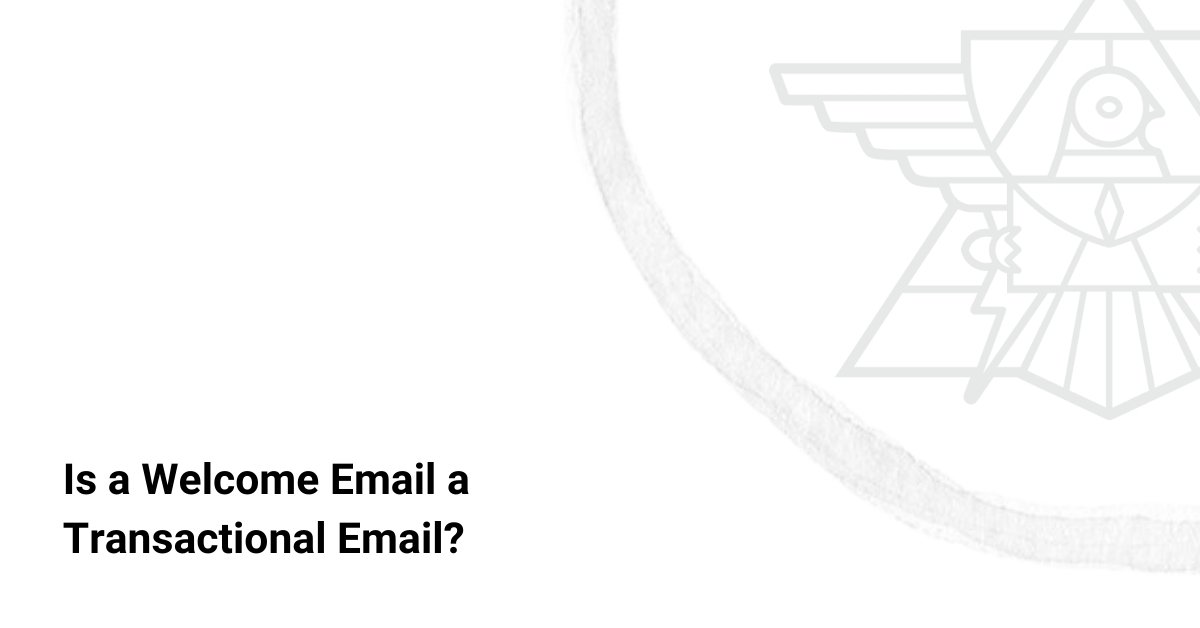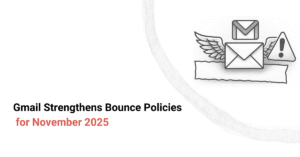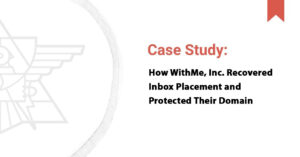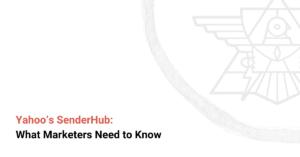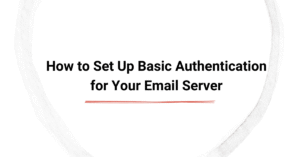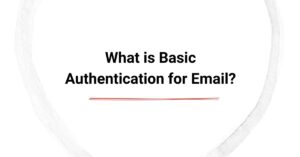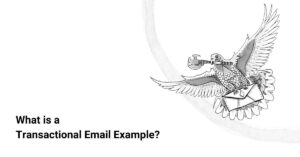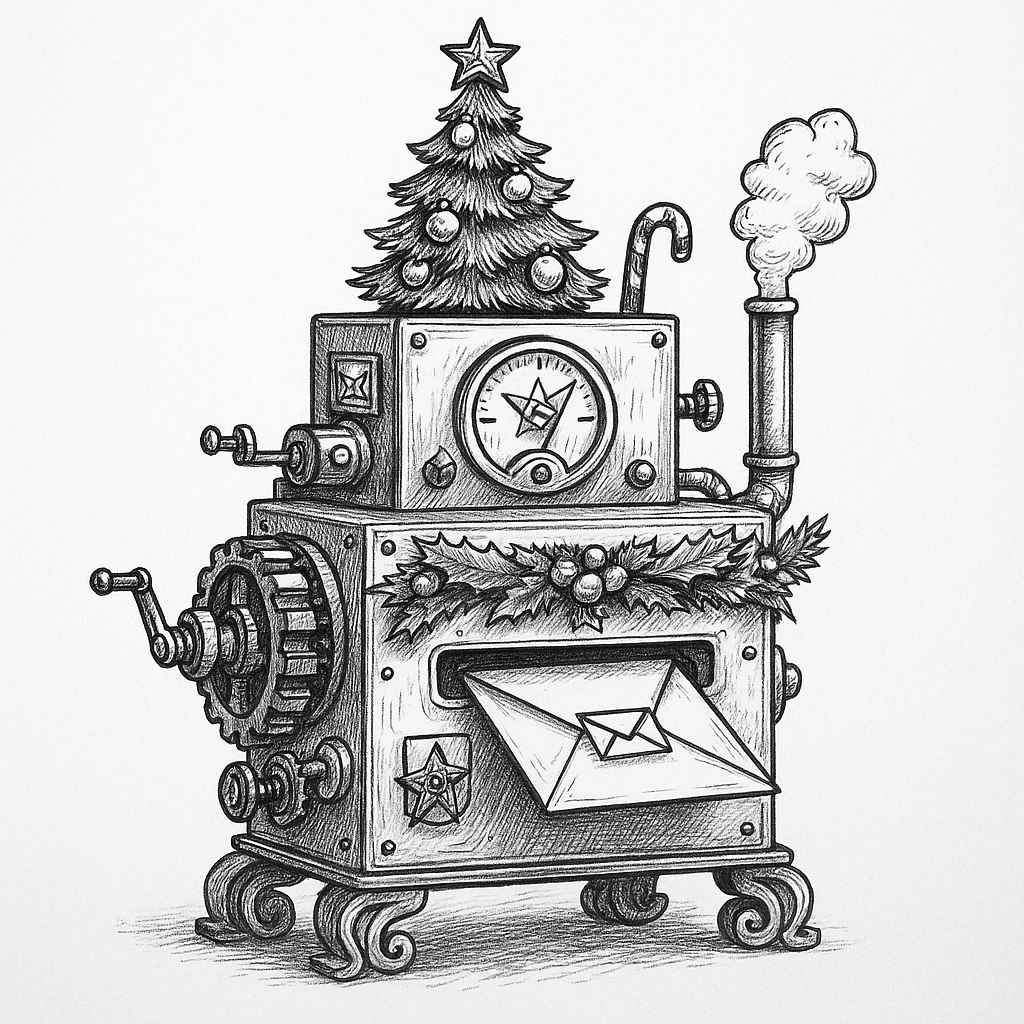A well-crafted first email can turn new signups into meaningful customer relationships, but is a welcome email a transactional email? Most welcome emails are transactional since they are the first point of contact after signup, but some fall under marketing emails. The classification depends on their content and the intent behind sending them.
Knowing where each message in your onboarding email sequence falls is vital, as it affects your compliance with regulations, alignment with customer expectations, and overall engagement. To help you out, we will clarify when welcome emails are transactional, provide examples, and outline best practices.
Main Points’ Summary:
- Welcome emails are sent after a user signs up to acknowledge their registration.
- They can be transactional if they only confirm account creation or provide essential login details.
- If they include promotional content, they are classified as marketing emails and must comply with marketing regulations.
- Best practices include personalization, clear CTAs, and email authentication for better deliverability.
What is a Welcome Email?
A welcome email is the first email a new user receives after signing up, making a purchase, or joining a mailing list. It introduces them to your brand and sets the tone for your relationship.
They are so effective that the average open rate for welcome emails is about 50%, leading to higher open rates compared to standard newsletters. They also generate 4x more opens and 5x more clicks compared to regular marketing emails. This makes them a crucial part of the onboarding email process, as they help you create a strong first impression, build brand recognition, and improve customer retention.
Depending on your business and the trigger, welcome emails can:
- Confirm account creation and provide clarity about their new subscription;
- Offer instructions for first-time use to ensure a smooth experience;
- Encourage further engagement by introducing key features, offering incentives, or inviting exploration of additional resources.
Is a Welcome Email Considered Transactional?
Welcome emails can be either marketing or transactional messages, depending on their content and purpose. Below is an overview of transactional vs marketing emails to help you know when they fall where.
What Defines a Transactional Email?
A transactional email is an automated message sent in response to a specific action or transaction users have performed on a website or application. These transactional email services provide essential and user-specific information. They have high engagement rates with average open rates between 80–85% since the recipients expect them and want to receive essential information about their transactions.
The most common examples of transactional emails are password reset emails, account creation confirmations, order confirmations and shipping notifications, payment invoices or failure notifications, and subscription renewals or cancellations.
Here are the key characteristics of transactional emails:
- Sent to individual users based on their actions, like password reset requests;
- Contain essential, non-promotional content such as a password reset link;
- Legally exempt from email marketing restrictions, as they don't require opt-in consent and unsubscribe links.
When is a Welcome Email Transactional?
A welcome email qualifies as a transactional email when it's triggered by specific user actions, such as creating an account or signing up for a service. As such, it contains no promotional messaging and has a functional purpose, including:
- Confirming the action, such as account creation;
- Providing essential account-related information like login details.
Here are some transactional email examples:
- “Welcome to [Service Name] – Your Account is Ready”
- “Account Successfully Created – Next Steps”
- “Verify Your Email to Activate Your Account”
When is a Welcome Email a Marketing Email?
A welcome message is categorized as a marketing email when it contains more than essential account-related information. Such content includes:
- Product promotions or upgrade offers;
- Discount codes or referral incentives;
- Links to blog content or social media promotions.
Here are some examples of marketing welcome emails:
- “Welcome! Get 10% Off Your First Purchase”
- “Discover More Features – Upgrade Now”
- “Follow Us on Social Media for Exclusive Content”
Key Differences Between Transactional and Marketing Welcome Emails
| Feature | Transactional Welcome Emails | Marketing Welcome Emails |
|---|---|---|
| Purpose | Confirms account creation | Encourages product engagement or purchases |
| Triggered by | User action (signup, registration) | Marketing automation workflow |
| Opt-in Required? | No, since it’s service-related | Yes, per GDPR & CAN-SPAM laws |
| Compliance | Doesn’t require an unsubscribe link | Must include an unsubscribe option |
Examples of Effective Welcome Emails
As we've mentioned earlier, welcome messages can be categorized into transactional and marketing emails. Let's examine some examples of each, along with their purposes, subject line examples, and key components.
1. Account Verification Welcome Email (Transactional)
An account verification welcome email is one of the best transactional email examples. It helps users complete their registration by providing a confirmation link and clear instructions on next steps. It also helps to secure user accounts, prevent unauthorized access, and often includes a contact support option for users who encounter issues during verification.
Subject Line Example: “Verify Your Email to Activate Your Account”
2. Login Details Welcome Email (Transactional)
These emails provide users with necessary information such as their username, login URL, and security tips to safeguard their accounts. It helps users access their accounts securely and efficiently, which is vital for a smooth user experience.
Subject Line Example: “Welcome to [Company Name] – Your Account Details”
3. Feature Introduction Welcome Email (Marketing)
This type of marketing welcome email encourages users to explore the platform's capabilities by offering a brief overview of key features and a CTA to explore services. The goal is to engage users, increase product adoption, and foster a deeper connection with the brand.
Subject Line Example: “Welcome! Here’s How to Get Started”
4. Discount Offer Welcome Email (Marketing)
The last type of welcome email is a discount offer that gives new users promotions and discounts in an attempt to drive sales. Offering discount codes or coupons gives them a tangible incentive to make a purchase.
Such emails also include an expiration date to encourage users to take action sooner rather than later. So, you can easily turn leads into paying customers and boost initial engagement with discount offer welcome emails.
Subject Line Example: “Enjoy 15% Off Your First Purchase”
Best Practices for Writing Welcome Emails
Crafting an effective welcome email requires careful consideration of several key factors. The best practices include personalization, simplicity, clear CTAs, mobile friendliness, email authentication, mobile optimization, and compliance. Here's what you need to know about each of these best practices for writing welcome emails.
Personalize the Email for Better Engagement
If you want to create a sense of familiarity and make the welcome email more relevant to the user's interests, personalize it. This can be as simple as addressing them by name or referencing their specific sign-up details.
Keep the Content Simple and Action-Oriented
Effective welcome emails focus on one key action, such as confirming an account, logging in, or setting up a profile. It helps users understand what to do next, reducing confusion and increasing the likelihood of successful onboarding.
Ensure Mobile-Friendliness
Did you know that over half of emails are opened on mobile devices? That's right and it means you must optimize your transactional email templates to make them more mobile-friendly. Ensure your design is responsive to make it easy to read and interact with on smaller screens.
Authenticate Your Emails for Better Deliverability
To ensure your welcome email lands in the inbox, authenticate your emails using technologies like SPF, DKIM, and DMARC. These protocols establish trust with email service providers and prevent spam and phishing attacks. Hence, they increase the chances that your email will be delivered to the user's inbox.
Avoid Overloading with Promotions
While it's tempting to pack your welcome email with promotions and offers, it might be off-putting to users. Therefore, balance your content to avoid appearing overly promotional. If the message feels too sales-oriented, it may be classified as a marketing email, which could affect email deliverability and compliance. Consider reserving the promotions for later emails in your sequence.
Ensure Compliance with Email Regulations
For transactional emails, you don't need to include an unsubscribe link, but you need to comply with GDPR and CAN-SPAM regulations. Marketing welcome emails must include an opt-out option and comply with anti-spam laws. Ensuring compliance means avoiding legal issues and maintaining a positive reputation with your users.
Common Mistakes to Avoid in Welcome Emails
If you want your emails to land in your subscribers inboxes rather than their promotional or spam folders, avoid lengthy messages, don't use a no-reply email, and minimize promotional content. Below is an overview of how to avoid these common mistakes.
Making Emails Too Lengthy
Lengthy emails can make users skip over important information or delete the email altogether. Avoid this by keeping your welcome email concise and focused on the primary action you want the user to take, such as verifying their account or logging in.
Sending a No-Reply Email Address
Using a no-reply email address can give the impression that you're not interested in hearing from your users or addressing their concerns. This can lead to frustration and a negative user experience. Instead, use a monitored email address, such as support@company.com, to show that you're committed to engaging with them and providing support when needed.
Overloading with Promotional Content in a Supposedly Transactional Email
Overloading your welcome email with promotional content can be a major turnoff for users. It can also lead to spam filtering and raise legal compliance issues if not handled properly. Thus, separate transactional and promotional content clearly, and prioritize providing value to your users over pushing sales or promotions.
Are You Making the Most of Your Onboarding Email Sequences?
Welcome emails can be transactional or marketing emails, depending on their content and purpose. If the email provides essential, user-specific information, such as account notification, password reset link, or login details, it's a transactional email. However, it becomes a marketing email if it contains promotional content.
Marketing emails must follow opt-in and unsubscribe regulations to be on the safe side of the law. You should also observe some best practices like keeping the messaging clear, concise, and compliant with regulations like GDPR and CAN-SPAM to make the most of your email marketing campaigns.
Need help optimizing your welcome email strategy? Contact us for a free email audit today!

